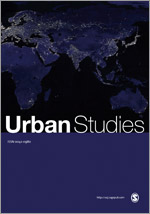Suburban status and neighbourhood change
This article examines suburban neighbourhood trajectories from 1970 to 2010 in the 100 most populous metropolitan areas in the US within the context of discussions around suburban decline and reinvestment. A weighted composite index of neighbourhood change indicators was used to identify the relative status of urban and suburban neighbourhoods. Index values were ranked by metropolitan area, and neighbourhoods were assigned to a corresponding quartile. The quartiles formed a status trajectory sequence, categorised as Reduced, Reduced with recovery, Stable or Improved. Neighbourhood trajectories were compared across city and suburb as well as across prewar, postwar, and modern suburban types. Despite increased discussion around suburban decline and suburban poverty, suburban neighbourhoods maintained a higher status than the city, were more likely to recover from reduced status and had higher frequencies of status improvement. The majority of suburban neighbourhoods occupied the highest status ranking in all decades. Stability was the most common trajectory for suburbs, and stable suburban neighbourhoods were higher status than stable urban neighbourhoods. The findings highlight geographies of neighbourhood inequalities and contribute to our understanding of regional and suburban neighbourhood change dynamics.

